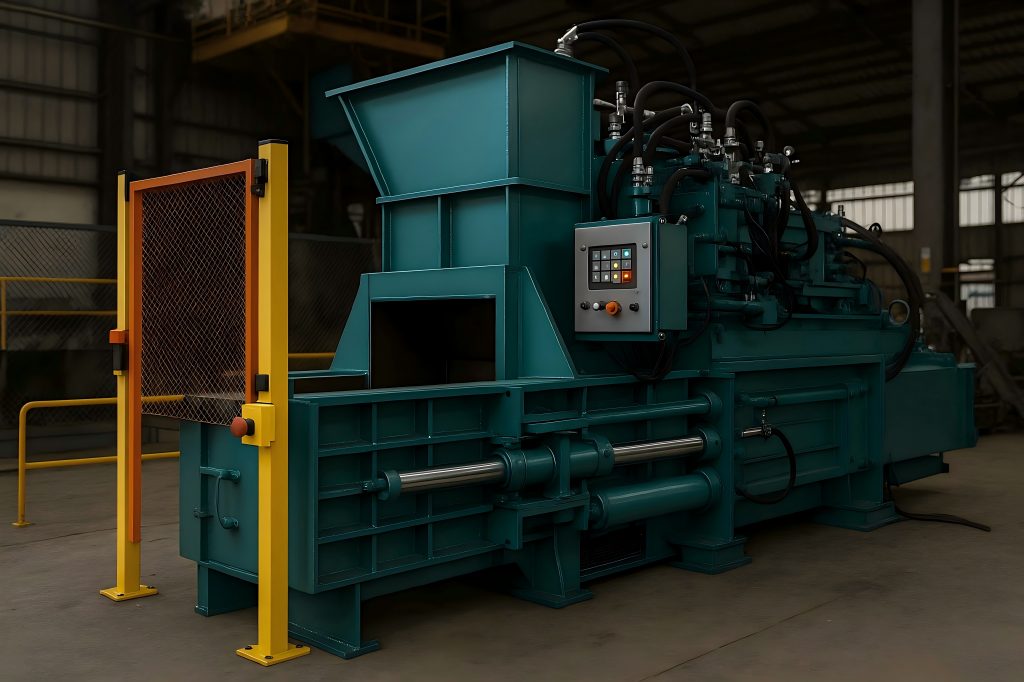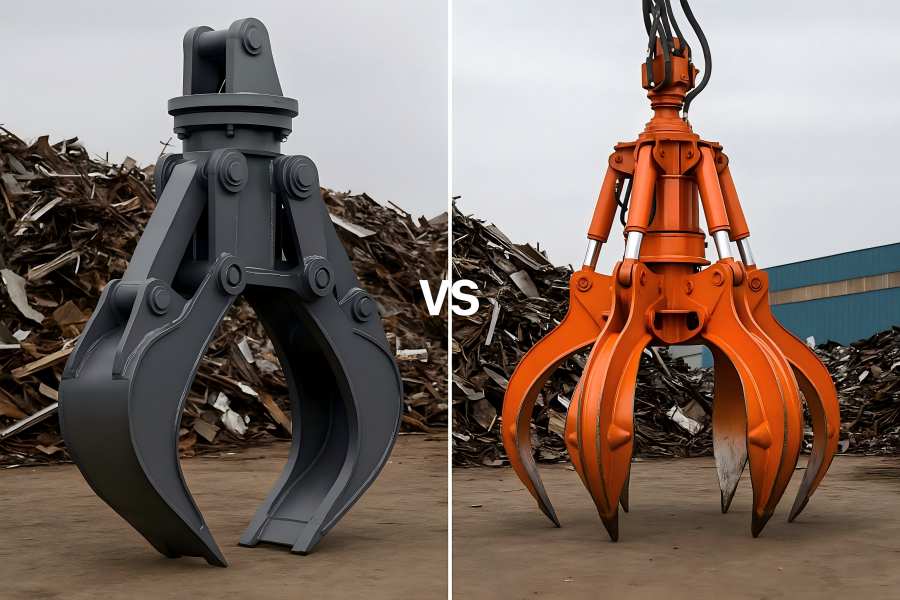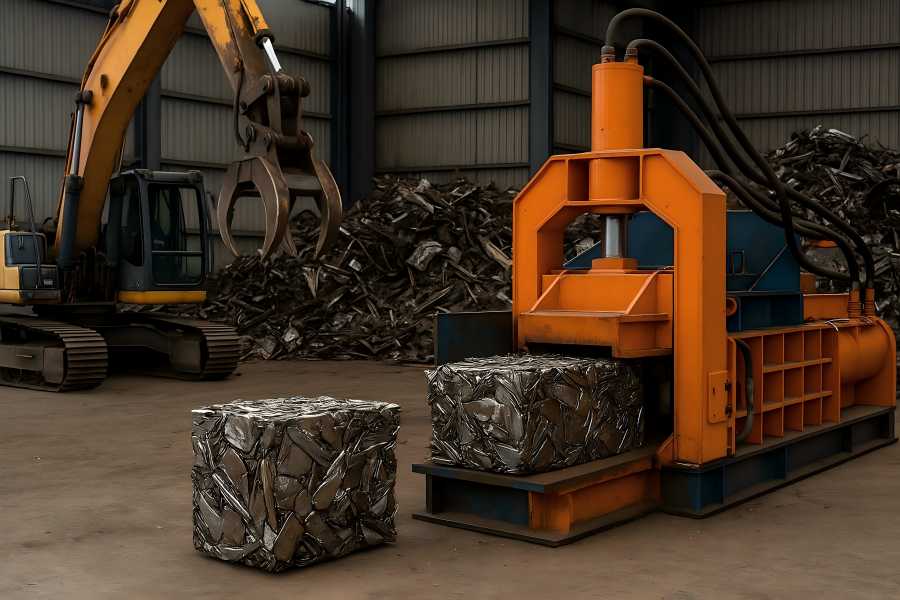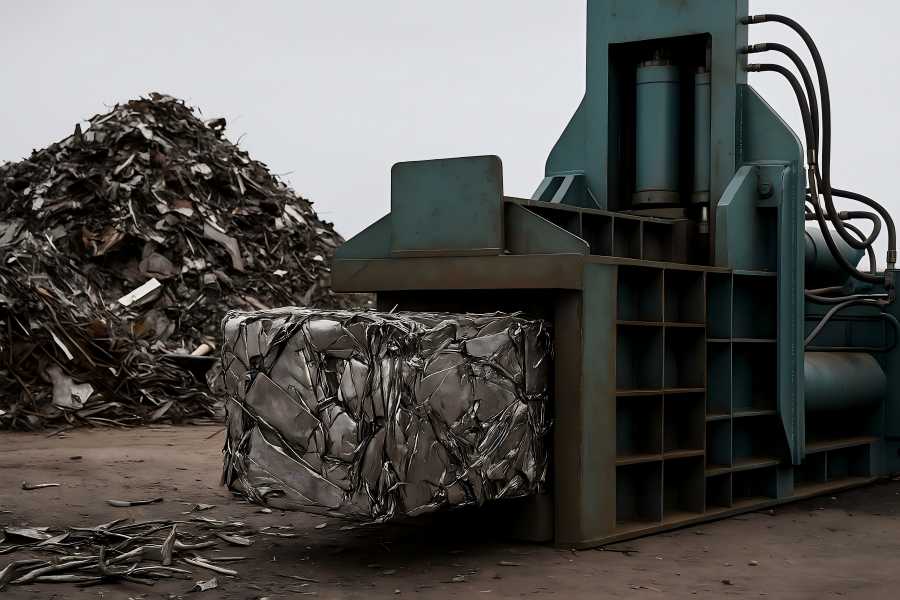Metal recycling demands speed and efficiency, but safety is just as important. Scrap metal balers use immense force to compress metal waste, posing serious risks if not properly equipped. Without key safety features, they can harm workers and damage facilities.
This article highlights the essential safety features engineers and operators should look for, ranging from guards and sensors to emergency systems, to keep operations safe and running smoothly.
Emergency Stop Systems
An essential safety feature of any heavy-duty machine is the emergency stop system, often referred to as the E-stop. On modern scrap metal balers, E-stops are strategically placed around the machine, including at operator stations, maintenance access points, and loading areas. These buttons instantly cut off power and stop all movement when pressed.
Key components include:
- Redundant circuit breakers are used to ensure that power is fully disengaged.
- Failsafe wiring design to prevent system re-engagement until a manual reset.
- Clearly labeled, easy-to-reach E-stop buttons that can be activated with a slap of the hand, even while wearing gloves.
In facilities that process different types of scrap with varying safety risks, E-stops are often networked into a central control system that can shut down multiple machines simultaneously if needed.
Interlock Guards and Access Doors
Modern balers are equipped with multiple access doors and service hatches for clearing jams or performing routine maintenance. These areas pose serious danger if the machine is active during access. Interlock guards prevent the machine from operating when a panel is open.
Types of interlock systems:
- Mechanical interlocks: physically block machine motion unless doors are shut.
- Electromechanical interlocks: integrate sensors to detect door positions and lockout controls.
- RFID-enabled systems: identify authorized personnel and log access history.
This safety mechanism ensures that maintenance staff cannot unknowingly start the machine or be exposed to moving parts while working on internal components.
Two-Hand Control Operation
To reduce the chance of accidental activation, especially during manual operation modes, many balers incorporate a two-hand control system. This requires the operator to press and hold two separate buttons—one with each hand—to initiate a baling cycle. Releasing either hand stops the cycle immediately.
This feature:
- Prevents a single hand from being used to press both buttons (a workaround that might result in injuries).
- Ensures the operator’s hands are out of harm’s way during critical machine movements.
- Complies with ISO 13851 and OSHA standards for dual-hand actuation devices.
Hydraulic Pressure and Overload Protection
Modern scrap balers operate under intense hydraulic pressure, often ranging from 1,500 to 5,000 psi. Overload protection systems monitor hydraulic pressure in real time to avoid structural or component failures.
Safety devices include:
- Pressure relief valves: automatically open when thresholds are exceeded.
- Load-sensing pumps: adjust hydraulic output to avoid overpressurizing the system.
- Cylinder stroke limit switches: ensure that the press does not exceed safe travel limits.
These systems not only enhance safety but also protect valuable equipment from excessive wear and catastrophic failure.
Infrared and Proximity Sensors
Advanced balers are increasingly equipped with infrared and proximity sensors that detect human presence near dangerous zones, such as the hopper, compression chamber, or ejection chute.
These sensors:
- Trigger alarms or shut down machine operations if movement is detected in restricted areas.
- Can be configured for zoned detection, allowing different levels of intervention based on proximity.
- Support real-time analytics, logging near-miss incidents for safety audits.
Machine vision and AI-based sensor systems are becoming more prevalent in automated baling lines, further enhancing safety through predictive monitoring.
Automated Bale Ejection with Safety Delays
Manual bale removal involves a high risk of crush injuries. To address this, modern balers are designed with automated bale ejection systems that:
- Use mechanical pushers or conveyors to discharge bales without human intervention.
- Include safety delays or light curtains to ensure that no personnel are within the discharge area during operation.
- Often feature load sensors to confirm that a bale is fully ejected before the chamber reactivates.
This feature significantly improves operational flow while minimizing risk during the unloading phase.
Operator Safety Cages and Guardrails
Where human interaction is required—such as loading loose scrap into vertical balers or clearing blockages—operator safety cages and guardrails provide physical separation from moving parts.
Features include:
- High-visibility mesh or polycarbonate panels for unobstructed observation.
- Lockable gates with interlock switches.
- Non-slip platforms and stairs for elevated operator access areas.
In large facilities, these enclosures are often color-coded and modular to comply with workplace safety standards.
Lockout/Tagout (LOTO) Compliance
Routine maintenance and cleaning expose workers to potential dangers if a baler is unintentionally reactivated. A robust lockout/tagout (LOTO) system ensures that machinery is safely de-energized during service.
Modern balers come equipped with:
- LOTO-friendly disconnect switches at power sources.
- Hydraulic isolation valves for pressure release.
- Tag holders and lock points are designed to comply with OSHA 1910.147 standards.
Proper training and integration of these features are essential for a safe maintenance culture.
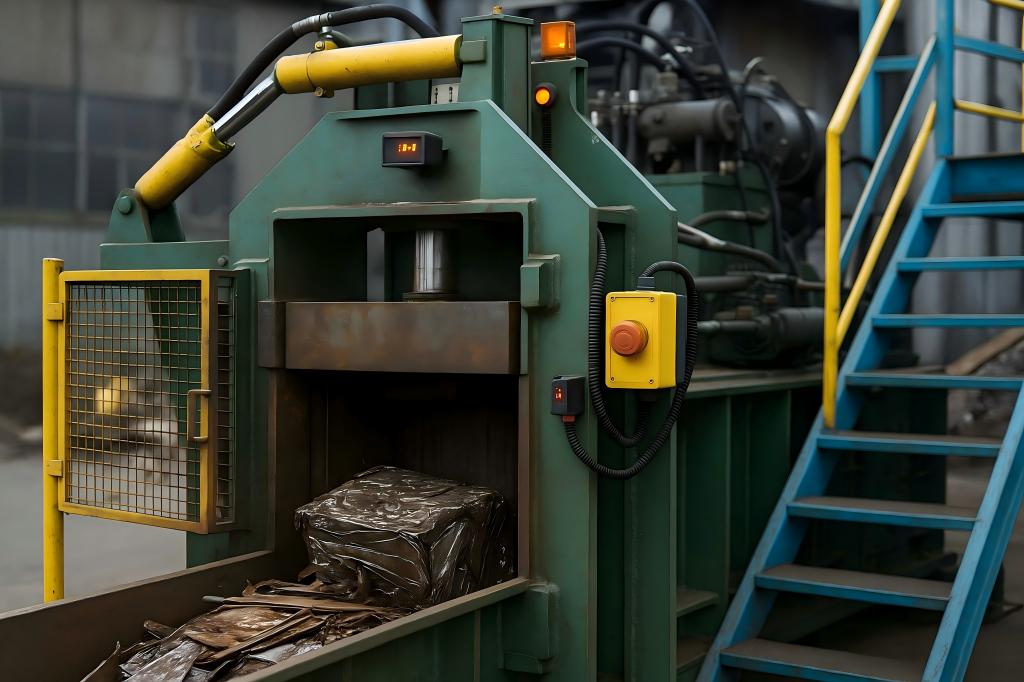
Touchscreen Control Panels with Safety Prompts
Modern control systems use touchscreen human-machine interfaces (HMIs) that guide operators through every step of the baling cycle while embedding safety protocols.
Key safety benefits:
- Password-protected access to limit unauthorized use.
- Step-by-step instructions and warnings before initiating critical operations.
- Visual alerts, such as flashing red screens or audible alarms, are used for potential risks.
With multi-language support and intuitive icons, HMIs also reduce errors caused by miscommunication or misunderstanding.
Real-Time Monitoring and Remote Diagnostics
With the rise of Industry 4.0, scrap balers now feature IoT-enabled monitoring systems that continuously assess machine health and safety performance.
Features include:
- Live streams of information on error codes, hydraulic pressure, and motor temperatures.
- Cloud-connected dashboards for supervisors to monitor baler activity remotely.
- Predictive maintenance alerts based on vibration analysis or cycle counts.
These technologies prevent accidents by identifying hazards before they become critical, enabling proactive safety management.
Fire and Heat Detection Systems
In facilities processing flammable scrap (e.g., oily metal parts, gas cylinders), integrated fire detection systems are vital. High-pressure compaction can generate heat or sparks that may ignite materials inside the chamber.
Modern balers incorporate:
- Thermal cameras or IR sensors to monitor chamber temperatures.
- Automatic CO₂ or dry chemical suppression systems that activate upon fire detection.
- Shutdown sequences that isolate affected areas and alert personnel.
These systems are crucial for compliance with NFPA 652 and insurance requirements.
Training and Safety Documentation Systems
If you are not properly trained, even the most sophisticated safety systems are useless. Many manufacturers now include interactive training modules and digital manuals accessible through the baler’s interface or mobile devices.
Features include:
- Training simulations are integrated into the system to acquaint operators with safety protocols.
- Digital logbooks for incident tracking and compliance.
- QR codes on the machine that link to videos or SOPs.
This approach helps reinforce a safety-first culture, especially in facilities with high turnover or multilingual workforces.
Noise and Vibration Dampening for Operator Health
Beyond immediate physical hazards, long-term exposure to vibration and noise can lead to occupational health issues. Modern balers address this with:
- Acoustic insulation around pumps and motors.
- Shock-absorbing mounts and pads under moving assemblies.
- Operator booths with ergonomic controls and noise-isolating materials.
Reducing these stresses not only keeps workers safe but also improves concentration and reaction time during operation.
Smart Safety Alarms and Notifications
Alarms in older balers were often binary—on or off. Newer models feature smart alarms that provide contextual feedback:
- Priority-based alerts, distinguishing between warnings, faults, and critical shutdowns.
- Multi-sensory cues, such as flashing lights, sirens, and vibration alerts for hearing-impaired users.
- Automatic logging of alarm events for later analysis.
This guarantees that the appropriate individuals are notified at the appropriate moment and lessens “alarm fatigue.”

